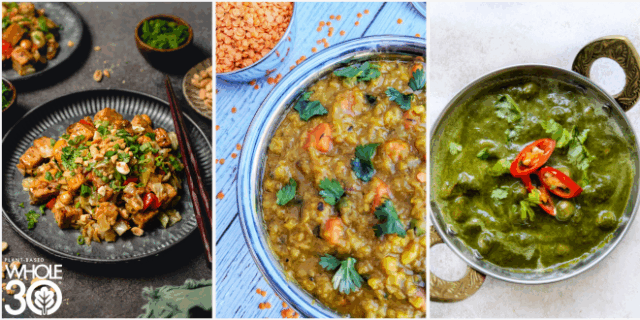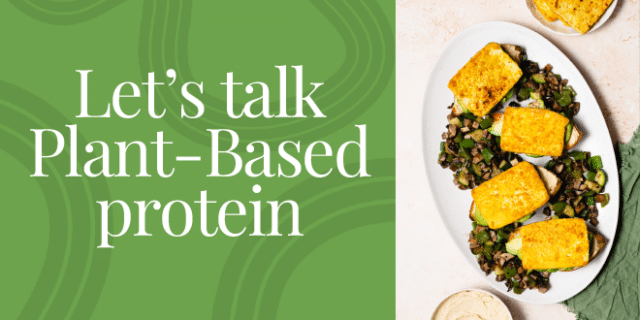Hing is the best addition to your spice cabinet that you may have never heard of. This unique ingredient is also called asafoetida, and it brings benefits that go far beyond tingling your taste buds.
Traditionally, hing has been used as a digestive aid. It’s commonly added to legumes (beans, lentils, and peas) and other gas-producing vegetables as an anti-flatulent. This can be incredibly beneficial for someone on a plant-based diet or doing a Plant-Based Whole30.
Find answers to your questions—from “what is hing?” to “how can I use asafoetida in my cooking?”—and start experiencing the taste and health benefits of hing.
Hing and Your Plant-Based Whole30—Understanding and Cooking with Asafoetida
We reached out to our friend Sandeep at Pure Indian Foods to help answer some questions about the spice. See their responses to our questions below and be sure to check out their Whole30 Approved Hing Powder.
Q: For the people who might not be familiar, what is hing? And why do people use it?
A: We have a blog post about the ayurvedic history of hing, but the usage of the spice dates back to 700 BC. It was, and still is, used as both a culinary and a medical spice, used traditionally for its antioxidant and antifungal properties. In cooking, it provides a unique flavor that elevates savory dishes.
Q: What are the main benefits of using it?
Hing can support healthy digestion, and, with its garlicky flavor, can replace onions and garlic in certain recipes to reduce nightshade consumption or for someone concerned about lowering FODMAPs.
Q: Do you have any favorite applications or recipes using it?
A: For cooking, raw hing seasoning takes form when you cook it with some fat—like ghee. That combination—a pinch of hing powder with 1 TBSP ghee—in a saucepan is a great start to an amazing side dish of your favorite sautéd vegetables. We’ve also added Hing to our Vegan Worcestershire Sauce (note: not Whole30 compatible) to take the place of garlic, onions, and anchovies. And also provide an umami flavor to dishes or homemade salad dressings or sauces.
You can also add a bit to a large pot of beans, lentils, or gas-producing vegetables when cooking as a digestive aid.
Q: Anything else you’d like to add about hing or your specific product?
A: Hing does have a pungent odor, but don’t let that discourage you from giving it a try! Raw hing has a strong smell, which is why it’s been called “Devil’s Dung.” But it’s also referred to as “God’s Food” because of all it can do for your health. We sell an amazing Whole30 Approved Raw Hing Powder. It’s the most pleasantly fragrant hing you’ll smell. I’ve smelled a LOT of hing in my life. So you can trust me when I say it’s the most aromatic, pleasant hing you’ll smell because it’s the best I have encountered!
Expand Your Seasoning Options with Hing Spice
We hope that you give cooking with hing spice a try. It’s often referred to as a “secret weapon” of the spice cabinet and can help elevate your meals during your Whole30—original or plant-based—and Food Freedom.
Whether you’re a seasoned cook or just starting out in the kitchen, hing is a great ingredient to experiment with and incorporate into your favorite recipes. So, next time you’re browsing the spice aisle, don’t overlook this small-but-mighty ingredient.
Thank you to Sandeep and Pure Indian Foods for giving us a great introduction to hing!

















